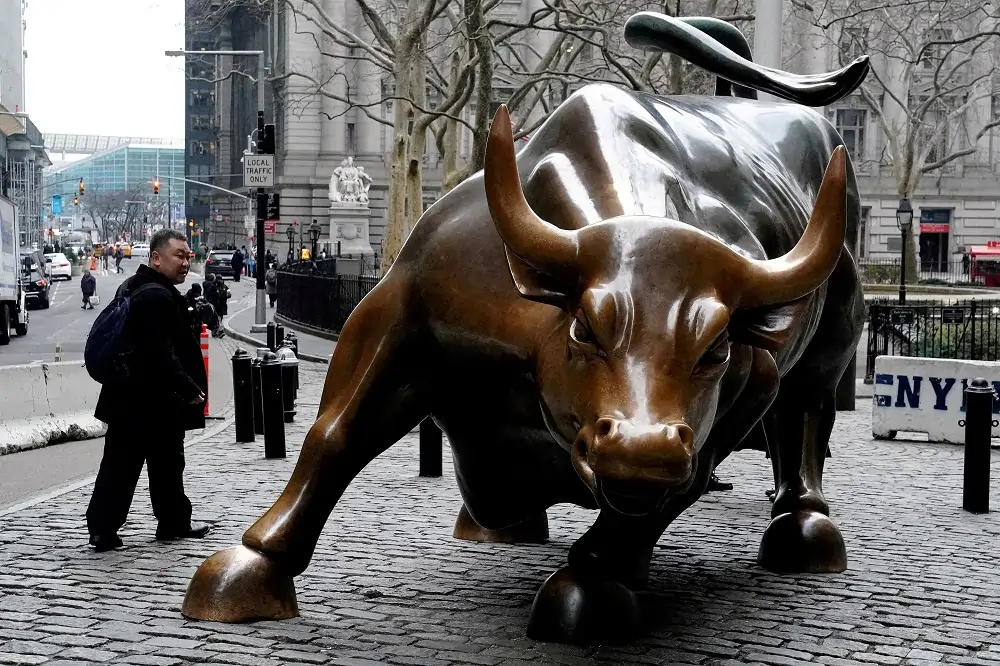
In the Market: Financiers fret over ‘leverage on leverage’ in private credit
By Paritosh Bansal
(Reuters) -To some elite financiers who gathered in Los Angeles for the Milken Institute conference, a debt binge in private markets is reminding them of the go-go days of risk-taking before the 2008 financial crisis.
In the halls of the Beverly Hilton and at meetings around town last week, I spoke with more than a dozen investors, bankers and fund managers involved in the booming $1.7 trillion private credit market, where investment funds lend private equity portfolio businesses and other companies money. Many of the financiers worried about the consequences of debt piling up in that market, which operates mostly out of sight of regulators.
Of particular concern to them were loans to private equity funds against portfolio companies that are already leveraged, lending that’s grown rapidly as a higher-for-longer interest rate environment stymies the ability of such firms to sell assets.
In many cases, the money is being raised to pay investors in these funds, such as pensions and endowments, dividends to meet demands for payouts, the financiers said. That also enables the fund managers to ask investors for new money, generating more fee income. In some cases, the money is being used to prop up struggling portfolio companies or to invest in them for growth, and to fund new acquisitions.
“Now that we’ve had a real hiatus in their ability to exit a lot of these (portfolio companies), they’ve had cash flow difficulties,” said David Hunt, CEO of Prudential Financial’s $1.3 trillion asset manager PGIM, referring to private equity firms. “And in order to deal with that, they have now been adding leverage to the fund level. So, they’ve got leverage on leverage.”
“They’re trying to get liquidity everywhere they can, and we’re not participating,” Hunt said, pointing to the market for loans to private equity funds as the place to look for “something to go creak in the night.”
Private credit has grown exponentially over the past few years, as banks pulled back their balance sheets due to tighter regulations. Major fund managers such as Oaktree Capital Management, Apollo Global Management and Ares Management as well as Wall Street banks such as Goldman Sachs and Morgan Stanley are active in the market. In the United States, private credit’s size is now comparable to leveraged loans and high yield bond markets.
The massive size of the market means excessive debt and financial engineering are causes for concern, as losses stemming from an economic slowdown or other shocks can threaten broader financial stability. Further, the opacity of the market can undermine confidence in the system and complicate regulatory response in case of problems, as has been evident with shadow banking debt issues elsewhere, like China.
One of the financiers said they attended a recent forum where regulators from some of the major agencies were asking about the linkages between banks and private credit markets in a bid to understand what was going on, both for the health of the banking system and for their ability to intervene if they ever needed to.
DOWNSIDE PROTECTION
To be sure, some financiers said while a downturn might lead to losses and depress returns for investors, the likelihood that problems in the private credit market would lead to a broader financial crisis is low.
One said while their firm would write large checks running into hundreds of millions of dollars, they spent time properly underwriting the loan and wrote in protections. For example, in their dealings with the most sophisticated private equity firms they would build in protections that prevent the borrower from removing assets from the pool of collateral for the loan or stop them from incurring more debt.
But that person and other financiers said that may not hold true across the market. Tony Yoseloff, managing partner at Davidson Kempner Capital Management, during a panel discussion cited Bank of America data to say that 22% of direct lending borrowers generated negative operating cash flow, and of them 8% had only enough cash to last two years or less.
LOWER RETURNS
Rapid growth has meant increased competition, with both more money and players flooding into the private credit market. There is also renewed competition from public markets. As a result, interest that lenders can charge on these loans has shrunk in recent months and some said there could be a race to the bottom.
Many expect the rate of defaults would rise in an economic slowdown and lead to lower recoveries for lenders.
While several financiers said their investors were pressing private equity firms to take on loans to pay them dividends, leaving them with no choice, Christopher Ailman, the outgoing chief investment officer of the $336 billion California State Teachers’ Retirement System, said he “would rather see them not add leverage.”
“The GPs are doing this to themselves,” Ailman said, referring to general partners, or the fund managers. “They’re used to that 2% management fee and that market is just frozen.”
Once they have paid the dividend to investors with the loan, he added, “they come right in and ask you back to recommit for that next fund.”
(Reporting by Paritosh Bansal; Editing by Anna Driver)


